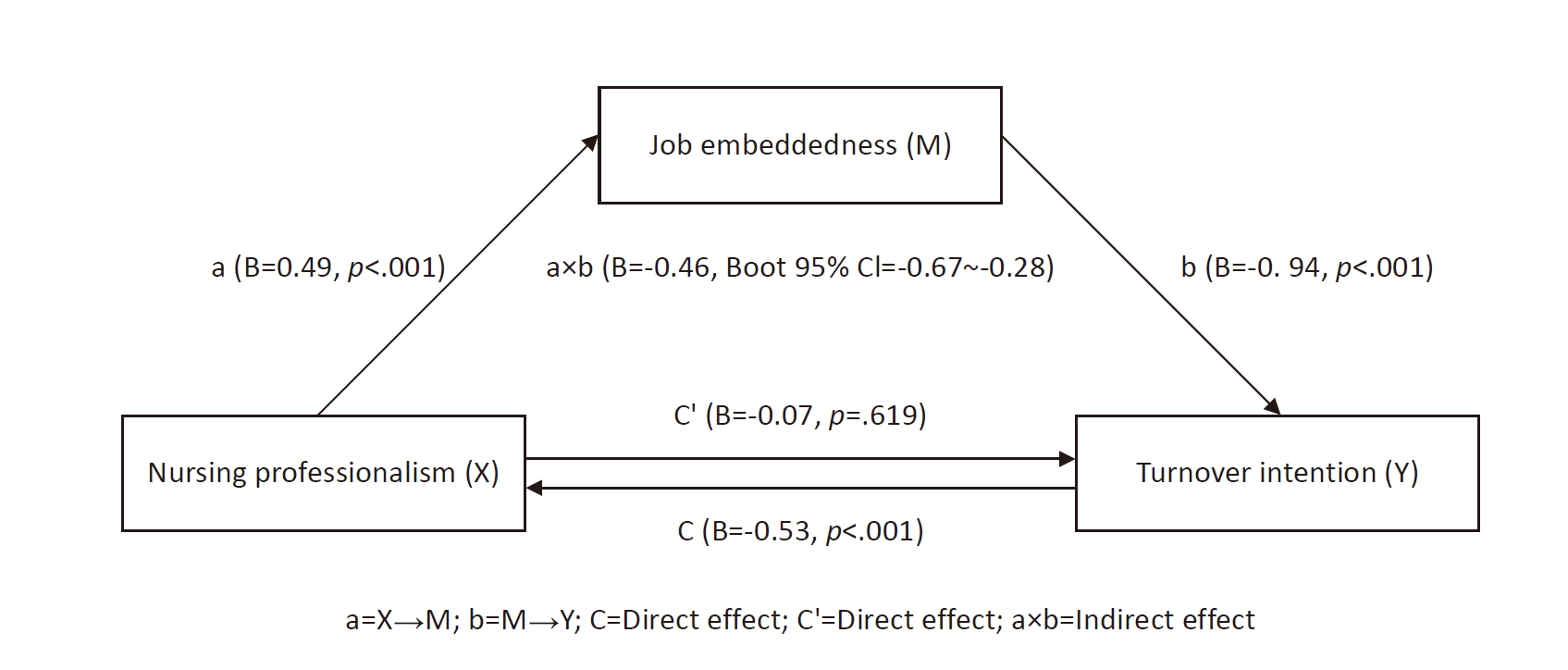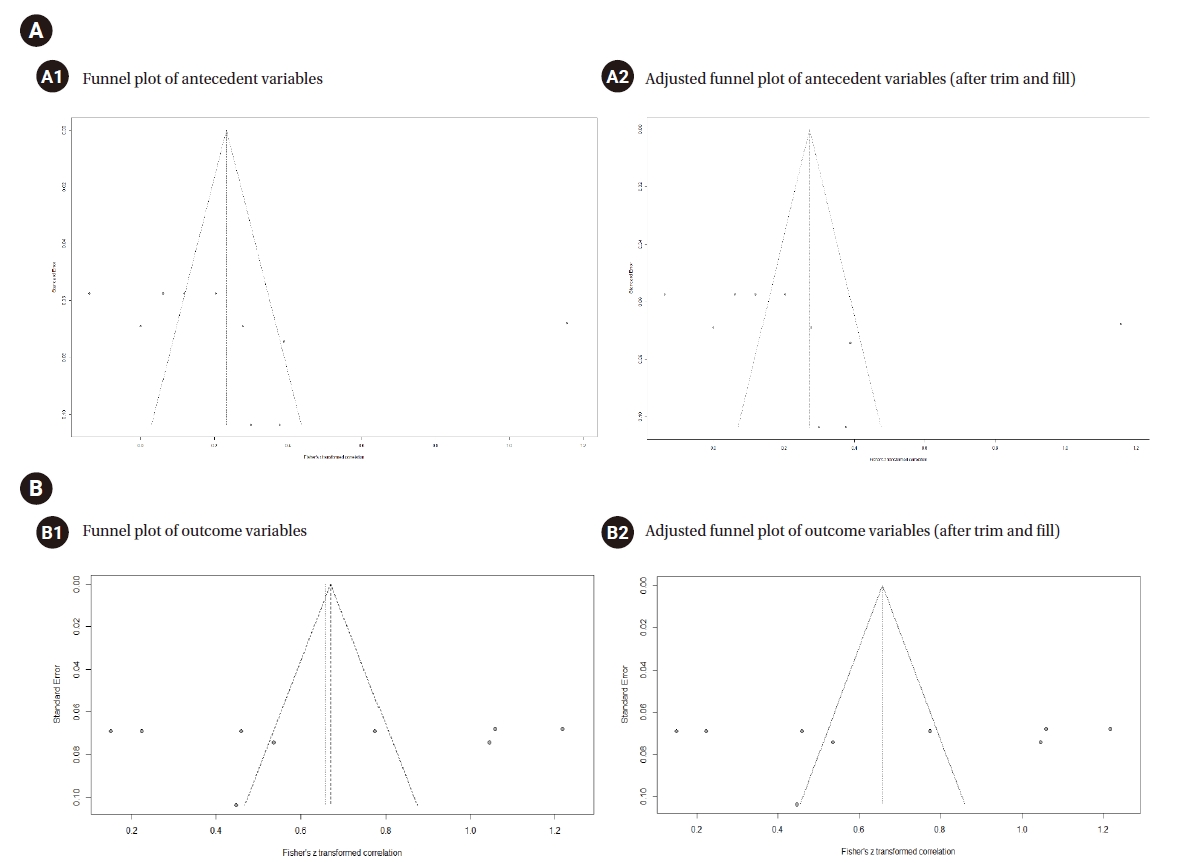| Sunmi Kim | 2 Articles |

Purpose
This study investigates the mediating effect of job embeddedness in the relationship between nursing professionalism and turnover intention among clinical nurses. Methods: A nationwide online survey was conducted using a structured questionnaire. Participants included 204 clinical nurses from tertiary hospitals in South Korea. Data on general characteristics, nursing professionalism, job embeddedness, and turnover intention were collected through self-reported questionnaires from March 19 to March 22, 2024. The analysis involved descriptive statistics, independent t-tests, one-way analysis of variance, Scheffé test, Pearson's correlation coefficients, multiple linear regression analysis, and bootstrapping, using SPSS/WIN version 29.0 and the SPSS PROCESS macro 4.2 version programs. Results: The mean score of nursing professionalism was 3.48±0.45 out of 5, job embeddedness was 3.13±0.52 out of 5, and turnover intention was 2.80±1.00 out of 5. Nursing professionalism did not directly impact turnover intention (B=-0.07, p=.649). Job embeddedness acted as a mediating factor in the relationship between nursing professionalism and turnover intention (B=-0.46, p<.05). Conclusion: These findings suggest that increasing job embeddedness can reduce nurses' turnover intention. Therefore, to decrease nurses' turnover intention, it is essential to enhance nursing professionalism while simultaneously promoting job embeddedness.

Purpose
This study aimed to conduct a systematic review to explore leadership-related variables among nurses in the novice and advanced beginner stages, identify research trends, and analyze effect sizes to provide evidence for developing a nursing leadership program. Methods: A systematic review and meta-analysis were conducted according to PRISMA(Preferred Reporting Items for Systematic Reviews and Meta-Analyses) and NECA (National Evidence based Healthcare Collaborating Agency) guidelines. Literature was searched from February 26 to April 26, 2024 using databases including KISS, KMbase, RISS, KoreaMed, Science ON, CINAHL, CENTRAL, Embase, PubMed, Web of Science, and Korean nursing journals. Meta-analysis was performed using R version 3.6.2. Results: From 589 articles, five studies were selected. Self-leadership was most frequently studied topic (80.0%). Leadership antecedents with k≥2 included preceptor’s clinical teaching behavior (correlation effect size [ESr], 0.34). For leadership outcomes, effect size analyses for cases with k≥2 indicated resilience (ESr, 0.72), nursing performance (ESr, 0.69), and organizational socialization (ESr, 0.31), with resilience demonstrating the largest effect. Conclusion: Preceptor’s clinical teaching behavior, resilience, nursing performance, and organizational socialization were identified as critical factors in leadership of the nurses at novice and advanced beginner stage. Enhancing leadership requires preceptor support, which can improve resilience and help early-career nurses overcome challenges. Therefore, strategies for leadership development must include specific measures to ensure preceptor support.
|
|

